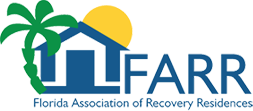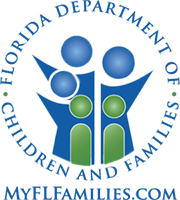What Is Meth and Why Is It So Addictive?
Methamphetamine (meth) is a synthetic drug that is made from a combination of common household chemicals in unregulated meth labs. Meth is a potent and addictive central nervous system stimulant that causes a quick psychological dependence.
Meth looks like small blue or white rocks, small pieces of glass, or powder. It can be eaten or dissolved and injected intravenously but is usually smoked or snorted.
There are some methamphetamine-based medications that were developed for nasal decongestion in the 20th century. Today, methamphetamine can also be found in drugs created to treat attention deficit hyperactivity disorder (ADHD) and narcolepsy, but these are controlled substances and cannot be easily obtained by people without a prescription.
Using crystal meth can lead to rapid dependency, compulsive drug use, and addiction. It is one of the most addictive substances available and can also cause several serious health issues, including chronic damage to the central nervous system. There is a high chance that meth bought off the street is cut with additives that can be dangerous to human health, including substances like:
- Hydrochloric acid
- Iodine
- Sulfuric acid
- Baking soda
- Lithium metal
- Red phosphorus
The difference between meth and these substances cannot be seen by the naked eye, so dealers will combine them to increase their profits.
Meth is also known by street names such as:
- Tina
- Christina
- Crank
- Speed
- Chalk
- Ice
- Glass
Why is Meth So Addictive?
Meth is a stimulant drug that, when first used, provides feelings of overall well-being, energy, and talkativeness. When compared to other stimulant drugs, meth is more potent because more of it can cross the blood-brain barrier at one time, allowing more of it to get into the brain at once. This causes an intense flood of dopamine to be released in the brain’s reward center.
In the beginning, meth will almost immediately:
- Decrease your appetite
- Increase your activity and energy levels
- Make you feel more sociable, outgoing, and talkative
- Give you a sense of euphoria and pleasure
These good feelings come on quickly after you take meth, but they also disappear quickly. As they wear off, users typically continue taking the drug to try and maintain the high and avoid the unpleasant feelings of coming down. The original euphoria from the first high can never be replicated, but the compulsive desire to continue trying to get it becomes imprinted on the brain.
Meth comedowns are not withdrawal symptoms, rather they are like an extremely difficult hangover. The brain was flooded by neurotransmitters like serotonin and dopamine, along with other chemicals that were converted into toxins that the body needs to remove from your system.
Physical exhaustion will also set in, along with symptoms like:
- Sadness, depression, hopelessness
- Muscle weakness, fatigue, lack of motivation
- Decreased appetite
- Anxiety
- Insomnia
- Headache
- Muscle pain (especially from clenching the jaw)
These symptoms become even more intense when meth is used together with other drugs or substances like opioids or alcohol. Its also dangerous to mix these drugs, doing so can result in death from overdose because meth can disguise overdose symptoms until it is too late.
Many people will binge meth over a period of days, in a process known colloquially as “tweaking”. This is when meth is used for days at a time, with the person continuously using meth, not eating, or sleeping at all, and foregoing regular life activities and responsibilities in favor of meth use. This type of behavior makes the comedown feelings even worse, and the longer you use meth the worse it feels when you stop. This reinforces the downward cycle of meth abuse.
Drug binges cause the brain to forget how to produce certain chemicals and neurotransmitters like dopamine on its own, and it begins to need the meth just to function normally, leading to physical dependence. Once you are dependent on meth for dopamine production, you will begin to experience withdrawal symptoms if you try to cut back or stop your meth use, leading to an addiction.
 The Source quite frankly saved my life and got me back on track, never giving giving up on me. When you are thinking about and looking through all of the different places to go for treatment this is the one that should stand out from the rest.
The Source quite frankly saved my life and got me back on track, never giving giving up on me. When you are thinking about and looking through all of the different places to go for treatment this is the one that should stand out from the rest.




























